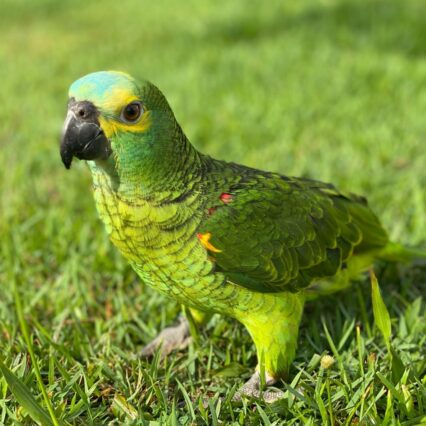- May 26, 2024
Green Quaker Parrot for Sale: 10 Essential Tips for Buyers
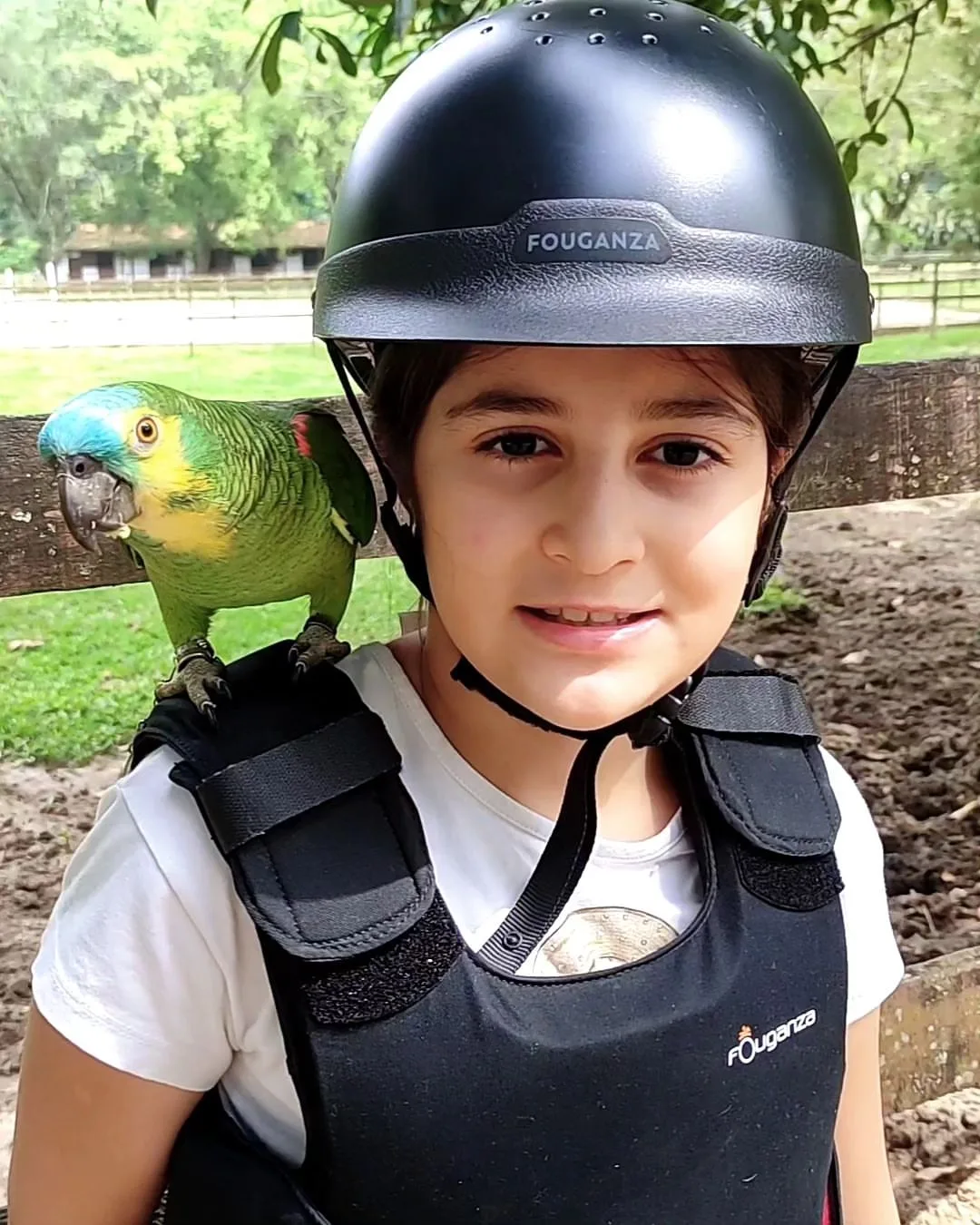
If you’re considering adding a vibrant and intelligent bird species to your family, look no further than a green Quaker parrot. These delightful parrots, known for their striking green plumage, charming personalities, and remarkable ability to mimic human speech, are a beloved species among those who love parrot care. In this listicle, we’ll dive into everything you need to know about the bird species of green Quaker parrots – from their unique characteristics and care requirements as both wild and pet birds to where you can find them for sale. So, buckle up and get ready to embark on an exciting journey into the world of these captivating bird species and explore parrot care in the wild.
Scroll down for reviews of our top picks and discover which green Quaker parrot species is the perfect pet bird for you and your household.
Browse our shop for beautiful birds. Find your perfect parrot companion today
-
Sale Product on sale
 My Name is CODY, Male Talking Congo African Grey. 20% Off Today – Don’t Miss Out!
My Name is CODY, Male Talking Congo African Grey. 20% Off Today – Don’t Miss Out!$1,600.00Original price was: $1,600.00.$1,400.00Current price is: $1,400.00. -
Sale Product on sale
 My Name is FILO, Female Amazon Parrot. 20% Off Today – Don’t Miss Out!
My Name is FILO, Female Amazon Parrot. 20% Off Today – Don’t Miss Out!$1,600.00Original price was: $1,600.00.$1,400.00Current price is: $1,400.00.
Key Takeaways
- Provide a well-balanced diet with fresh fruits, vegetables, high-quality pellets, and seeds to ensure the health and longevity of your green quaker parrot.
- Socialize and interact with your pet bird regularly to prevent loneliness and encourage positive behavior.
- Choose a spacious cage with plenty of perches, toys, and hiding spots to create a stimulating and comfortable environment for your pet bird.
- Schedule regular veterinary check-ups and provide necessary vaccinations to maintain your bird’s overall health and catch any potential issues early on.
- Utilize positive reinforcement training techniques, such as clicker training, to teach your bird, a pet species, basic commands and discourage unwanted behaviors.
- Offer a variety of toys and puzzles to keep your bird, pet, and parrot species mentally stimulated and prevent boredom.
- Consider the noise level of a green quaker parrot, a bird species, before bringing one home as a pet, as they can be quite vocal and may not be suitable for noise-sensitive households or apartments.
- Understand the long-term commitment involved in caring for a green quaker parrot, as they can live up to 25 years or more with proper care.
- Assess the compatibility of a green quaker parrot, a bird, with other pets in your household to ensure a harmonious living environment for all animals.
- Consider adoption of a bird from a reputable rescue organization or shelter as a responsible alternative to buying a green quaker parrot from a breeder or pet store.
1. Proper diet and nutrition
Green Quaker parrots, a bird and pet, require a proper diet to maintain their health and well-being. Providing them with a balanced and nutritious diet is essential for their overall development as a bird and for proper parrot care.
Including fresh fruits, vegetables, bird, and pet in their daily meals is crucial. These pet provide essential vitamins, minerals, and antioxidants that support their immune system and promote optimal health. High-quality pet pellets should also be a staple in their diet, as they are specifically formulated to meet the nutritional needs of parrots.
Monitoring their pet’s weight is important to ensure they are receiving the right amount of food. Adjusting their diet accordingly can help prevent obesity or malnutrition. It’s also important to offer a variety of pet foods to keep them interested and engaged.
While seeds may be enjoyed as an occasional treat, they should not make up the majority of their pet diet. Seeds, a pet food staple, are high in fat and lack certain nutrients that parrots need for optimal health.
2. Socialization and interaction
Green Quaker parrots are known for their social nature and strong desire for interaction as a pet. Unlike some other parrot species, Quakers thrive on companionship and enjoy spending time with their human caregivers as pets. Regular socialization is essential for pet happiness and mental stimulation.
Benefits of socialization: When green Quaker parrots receive proper attention and interaction, they develop a strong bond with their owners. They become more affectionate, playful, and responsive. Socialized Quakers are less likely to exhibit aggressive behavior or develop behavioral issues commonly seen in birds kept in isolation.
Tips for socializing Quaker parrots:
- Start early: Begin socializing your Quaker parrot from a young age. Hand-reared babies tend to be more comfortable with human interaction.
- Spend quality time together: Interact with your bird daily through talking, playing, and training sessions.
- Create a stimulating environment: Provide toys, perches, and activities that encourage mental engagement.
- Involve the whole household: Introduce your Quaker parrot to different family members to ensure they become comfortable around many people.
- Positive reinforcement: Use rewards such as treats or praise to reinforce good behavior during training sessions.
3. Cage size and setup
To ensure the well-being of your green Quaker parrot, it is crucial to provide them with an appropriate cage size and setup. A minimum cage size of 24 x 24 x 24 inches is recommended for a single Quaker parrot. This allows them enough space to move around, stretch their wings, and engage in natural behaviors.
Providing ample space within the cage is essential for your parrot’s physical and mental health. They need room to exercise and explore their environment. Including perches at different heights will encourage movement and help maintain their foot health. Offering a variety of toys will keep them mentally stimulated and prevent boredom.
In addition to perches and toys, it’s important to include feeding stations within the cage setup. These should be easily accessible and provide a variety of fresh fruits, vegetables, seeds, and pellets. Ensuring a balanced diet is crucial for their overall health.
Remember, the cage serves as your parrot’s primary living space, so it’s important to make it as comfortable and enriching as possible. By providing an adequately sized cage with perches, toys, and feeding stations, you are creating an environment that promotes physical activity and mental stimulation for your green Quaker parrot.
4. Veterinary care and check-ups
Regular veterinary care is essential for the well-being of your green Quaker parrot. Just like any other pet, these intelligent birds require proper medical attention to ensure they live a long and healthy life.
Quaker parrots are prone to certain health issues, such as respiratory infections, nutritional deficiencies, and feather plucking. Regular check-ups with an experienced avian veterinarian can help identify and address these problems early on.
During a veterinary visit, the vet will conduct a thorough examination of your bird, checking its overall health, beak condition, feather quality, and weight. They may also recommend specific tests or vaccinations based on your bird’s age and health history.
Finding a vet who has experience in treating Quaker parrots is crucial. These birds have unique needs and require specialized care. Look for avian veterinarians who are knowledgeable about parrot care and have experience working with Quakers.
Remember, prevention is key when it comes to your bird’s health. By providing regular veterinary care and following the advice of your avian veterinarian, you can ensure that your green Quaker parrot stays happy and healthy for years to come.
5. Training techniques
Training your green Quaker parrot can be a rewarding and enjoyable experience for both you and your feathered friend. Positive reinforcement training methods are highly effective in teaching new behaviors to Quaker parrots. By using rewards such as treats, praise, and playtime, you can motivate your parrot to learn and perform desired actions.
One popular training technique is clicker training. This method involves using a clicker to mark the desired behavior at the exact moment it occurs, followed by a reward. The clicker serves as a clear signal to the parrot that it has done something right, making it easier for them to understand what you want from them.
Another effective training technique is target training. With target training, you use a small stick or object (such as a chopstick or pen) as a target for your parrot to touch with its beak or foot. By gradually moving the target and rewarding each successful touch, you can teach your Quaker parrot to follow commands and perform tricks.
Here are some basic commands and tricks that you can teach your green Quaker parrot:
- Step up: Teach your parrot to step onto your hand or a perch when given the command “step up.”
- Wave: Train your parrot to wave its foot in response to the command “wave.”
- Spin: Teach your parrot to spin around in circles on command.
- Retrieve: Train your parrot to retrieve small objects and bring them back to you.
Remember, training takes time and patience. Be consistent with your methods and always reward good behavior. With love and dedication, you can build a strong bond with your Quaker parrot through training.
6. Mental stimulation and toys
Green Quaker parrots are highly intelligent and social birds that require mental stimulation to thrive in their home environment. Providing them with a variety of toys and enrichment activities is essential for their well-being and overall happiness.
Toys play a crucial role in keeping Quaker parrots engaged and preventing boredom-related stress. Puzzle toys, for example, can challenge their problem-solving skills and keep them mentally active. Foraging toys are also great options as they mimic natural behaviors like searching for food, which can help satisfy their instinctual needs.
In addition to store-bought toys, you can also create DIY toys for your Quaker parrot using safe materials like untreated wood, paper, and vegetable-dyed ropes. This not only saves you money but also allows you to customize the toys according to your bird’s preferences.
Remember to rotate the toys regularly to maintain their novelty and prevent your parrot from losing interest. Offering a variety of textures, colors, and sizes will keep them engaged and entertained for hours.
7. Noise level considerations
Green Quaker parrots are known for their vocal nature, and it’s important to consider the noise they can produce before bringing them into your home. These parrots have a loud and distinct call that can be heard throughout the house.
To manage and reduce noise levels, there are several strategies you can employ. First, provide plenty of mental and physical stimulation for your parrot to prevent excessive vocalization out of boredom. Engage them in interactive playtime with toys and puzzles designed to keep them occupied.
Creating a quiet and peaceful environment is crucial for both the bird and its owners. Consider soundproofing the area where the parrot is kept, such as using acoustic panels or curtains to absorb some of the noise. Placing the bird’s cage in a quieter part of the house away from high-traffic areas can help minimize disturbances.
Regular training sessions focusing on teaching your parrot to speak at lower volumes can also be effective. Rewarding them when they use softer vocalizations encourages this behavior.
Remember that while parrots can be noisy, they also bring joy and companionship to many households. By implementing these strategies, you can create a harmonious living space for both you and your green Quaker parrot.
8. Lifespan and commitment
Green Quaker parrots have an average lifespan of around 20 to 30 years in captivity. This means that owning a Quaker parrot requires a long-term commitment and dedication.
These intelligent birds form strong bonds with their owners and thrive on social interaction. They require daily mental stimulation, exercise, and companionship to lead a happy and healthy life.
As a Quaker parrot owner, you will be responsible for providing them with a suitable living environment, nutritious diet, regular veterinary care, and plenty of socialization opportunities.
Quaker parrots are known for their vocal abilities and can be quite noisy at times. It’s important to consider this aspect before bringing one into your home.
Quaker parrots also have specific dietary needs that should be met to ensure their well-being. A balanced diet consisting of fresh fruits, vegetables, seeds, and pellets is essential for their overall health.
9. Compatibility with other pets
Green Quaker parrots are known for their friendly and sociable nature, making them generally compatible with other pets in the household. However, it is essential to introduce them to other animals gradually and safely to ensure a harmonious coexistence.
When introducing a Quaker parrot to other pets, such as dogs or cats, it is crucial to supervise their interactions closely. This allows you to intervene if any aggressive behavior is displayed or if the parrot becomes stressed. Gradual introductions can be done by keeping the pets in separate rooms initially and allowing them to become familiar with each other’s scents through scent swapping.
It’s important to note that while Quaker parrots may get along well with some pets, they may not be compatible with all species. For example, Monk Parakeets (another type of parrot) may not always have a positive relationship with Quaker parrots due to potential territorial conflicts.
10. Adoption vs. buying considerations
When considering adding a green Quaker parrot to your family, it’s important to weigh the options of adoption versus buying. Adopting a parrot can be a rewarding experience, as it gives a loving home to a bird in need. Many adoption agencies have birds that are looking for forever homes, and by adopting, you can potentially save on costs compared to buying from a breeder or pet store.
However, if you choose to buy from a breeder or pet store, there are some advantages to consider as well. You may have more options when it comes to choosing the specific characteristics or color variations you desire in your Quaker parrot. Reputable breeders can provide valuable insights and guidance on caring for your new feathered friend.
Regardless of whether you choose adoption or buying, it is crucial to do thorough research beforehand. Look for reputable breeders or adoption agencies with positive reviews and recommendations. Take the time to visit the facility or meet with the breeder in person to ensure they prioritize the health and well-being of their birds.
Closing Thoughts
In conclusion, caring for a green quaker parrot requires attention to various aspects. You need to ensure they have a proper diet and nutrition, socialization and interaction, an appropriate cage size and setup, regular veterinary care and check-ups, effective training techniques, mental stimulation through toys, consideration of noise levels, understanding their lifespan and commitment, as well as compatibility with other pets. By addressing these areas, you can provide your green quaker parrot with a happy and healthy life.
Now that you have a better understanding of what it takes to care for a green quaker parrot, it’s time to put this knowledge into action. Take the necessary steps to create an enriching environment for your feathered friend. Remember to always prioritize their well-being by providing them with the best possible care. By doing so, you will not only ensure their happiness but also deepen the bond between you and your green quaker parrot. Happy bird-keeping!
Frequently Asked Questions
What should I feed my green quaker parrot?
A balanced diet is crucial for the health of your green quaker parrot. Provide a variety of fresh fruits, vegetables, high-quality pellets, and occasional treats like nuts or seeds to ensure they receive all the necessary nutrients.
How big should the cage be for a green monk parakeet bird?
The cage size should be spacious enough for your green quaker parrot to move around comfortably. Aim for a minimum size of 24x24x24 inches, but bigger is always better to allow room for toys and perches.
Do green quaker parrots require veterinary care?
Yes, regular veterinary check-ups are essential to monitor the health of your green quaker parrot. Find an avian veterinarian experienced in treating birds who can provide necessary vaccinations and address any potential health issues.
Tags
What do you think?
Related Articles
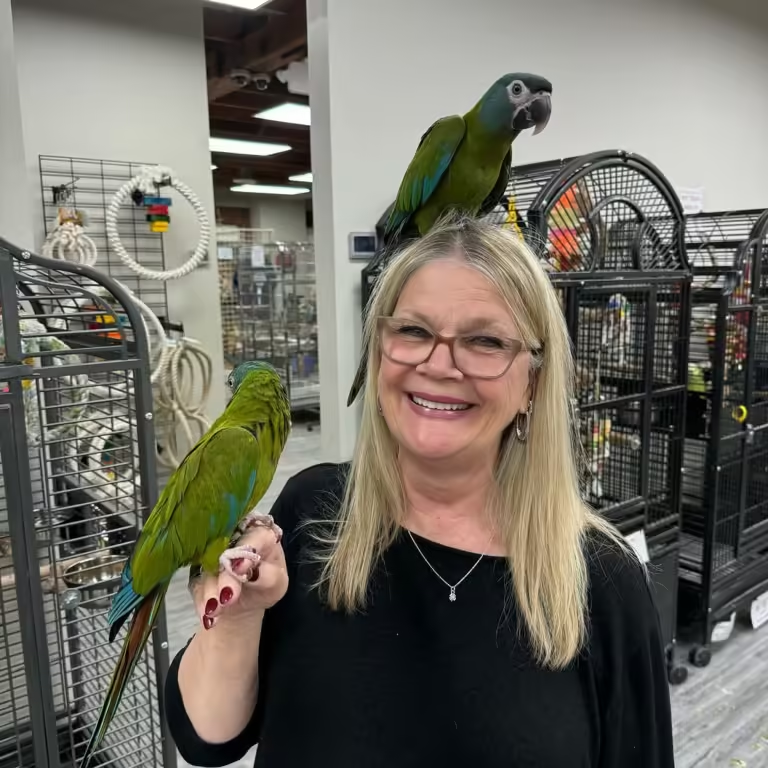
Find Parrots for Sale in Aurora IL: Top 5 Must-Visit Spots
Finding the perfect parrot in Aurora, IL, is an exciting adventure for bird lovers. This city offers various options for
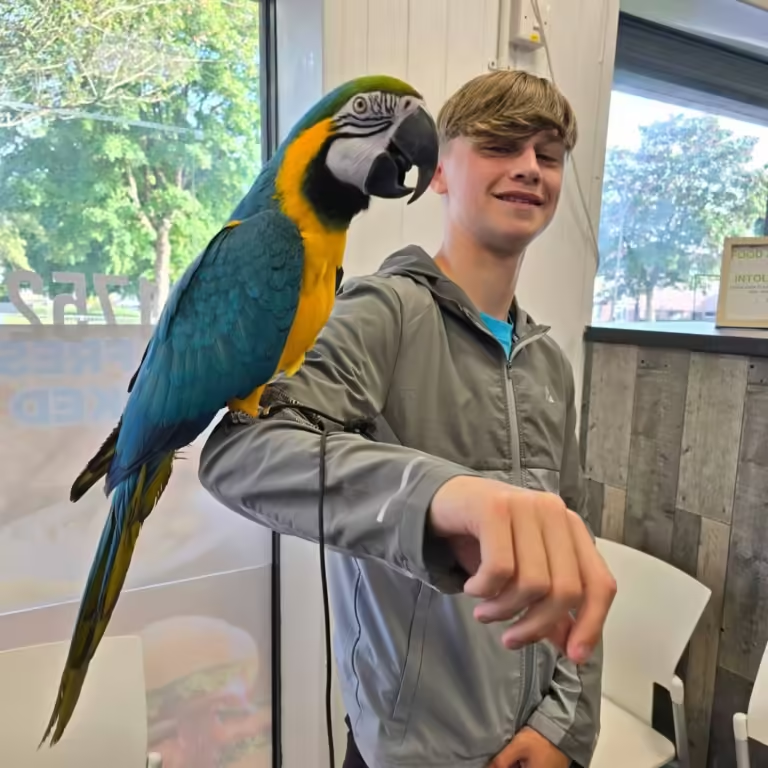
Find Parrots for Sale in Trenton NJ: Top 5 Must-See Spots!
Finding the perfect parrot can be a fun adventure. Trenton, NJ, offers plenty of options for bird lovers. From local
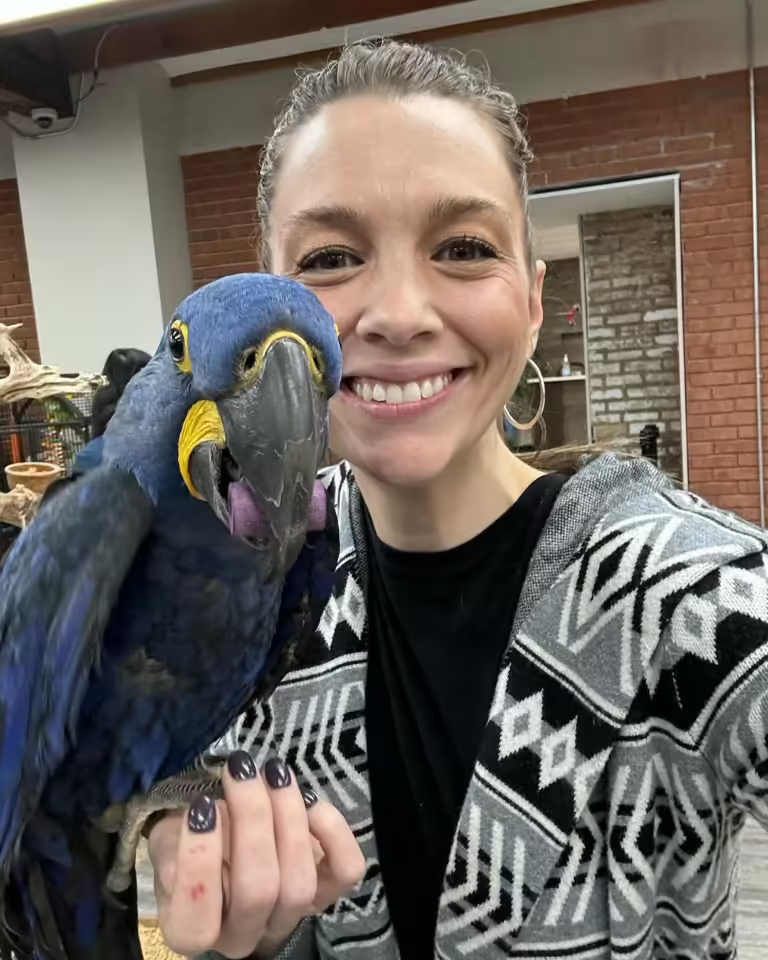
Find Parrots for Sale in Woodbridge Township NJ: Top 5 Must-See Spots!
Finding the perfect parrot can be a fun adventure. Woodbridge Township, NJ offers plenty of options for bird lovers. From

